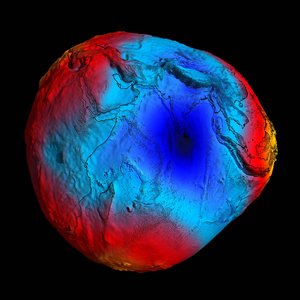Solid-Earth physics
Since the gravity measurements taken by GOCE reflect density variations in the Earth's interior, the resulting data are leading to new insights into processes occurring in the lithosphere and upper mantle – down to a depth of about 200 km.
This detailed mapping, along with seismic data, is shedding new light on the processes linked to earthquakes and volcanic activity.
In particular, data from GOCE have been used to map the boundary between Earth’s crust and underlying mantle – the Mohorovičić discontinuity or ‘Moho’ – with unprecedented resolution. This worldwide map offers new clues for understanding the dynamics of Earth’s interior, unmasking the gravitational signal produced by unknown and irregular subsurface density distribution.

The results from GOCE are also furthering our knowledge of land uplift due to post-glacial rebound. This process describes how Earth's crust is rising a few centimetres in Scandinavia and Canada as it has been relieved of the weight of thick ice sheets since the last Ice Age – when the heavy load caused the crust to depress. As a result, there is global redistribution of water in the oceans.
Hence, a better understanding of these processes will help in assess sea-level change.





